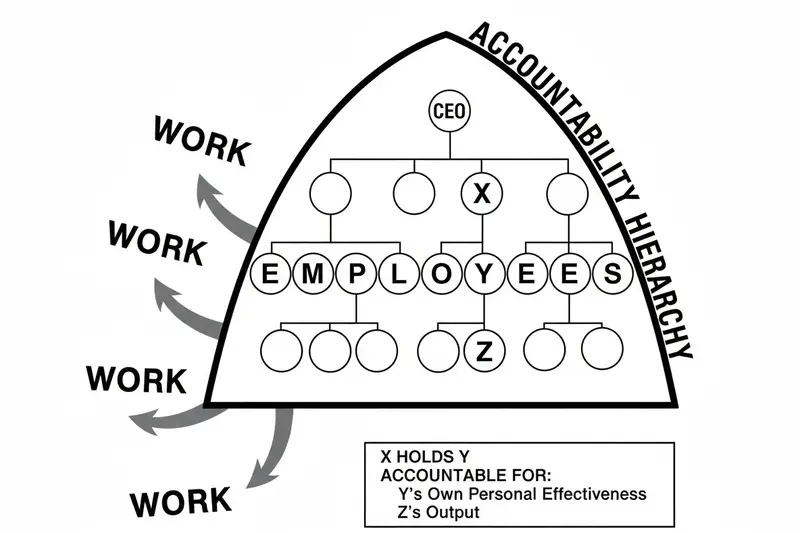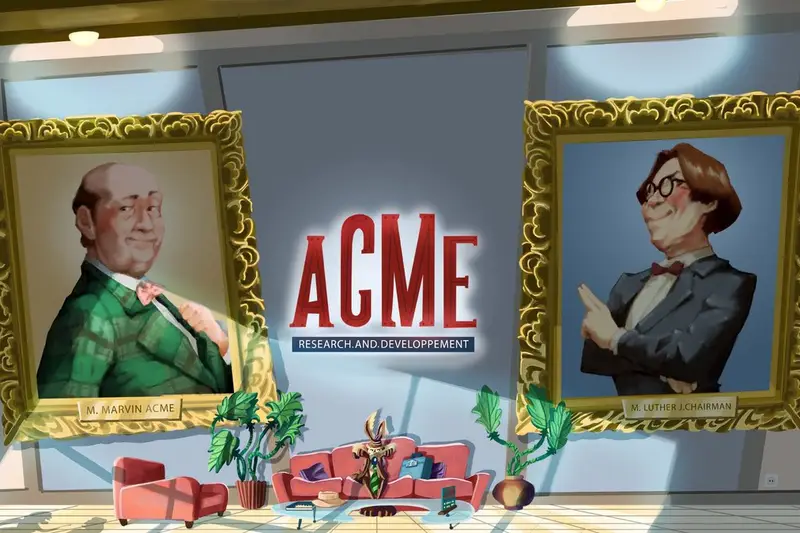A Stratified Model of Emotional Intelligence
Basics
A Stratified Model of Emotional Intelligence
Four distinct orders of emotional maturity, each with four functional levels

Contributor:
Сергей Владимирович Тихончук
7 hours ago
Abstract
This article proposes a new framework for understanding emotional intelligence (EQ) by adapting Elliott Jaques’s theory of organizational strata. Instead of viewing EQ as a collection of skills (self-awareness, empathy, social skills), we map it using spatio-temporal dimensions: how far into the future you emotionally plan, and who you include in your sense of self. The result is four distinct orders of emotional maturity, each with four functional levels.
Introduction
Traditional EQ models treat emotions like ingredients—add empathy, self-regulation, social skills, and you’re done. But this misses how emotions actually develop. A person jealous enough to commit murder and a spiritual teacher forgiving their enemy aren’t just different in degree; they’re different in kind. The difference isn’t “more empathy” but a fundamentally expanded sense of self and time horizon.
A Stratified Model of Emotional Intelligence
Elliott Jaques showed organizations naturally stratify into levels with increasing time horizons for decisions, from operators (days–months) to CEOs (decades). He linked strata to task complexity and time span, emphasizing cognitive capacity beyond simple IQ. Emotional intelligence is equally critical: without it, leaders cannot form and guide teams to execute long-horizon strategies.
EQ strata can be aligned with Jaques’s cognitive strata so dimensions correspond. A Stratum IV plant manager needs both Stratum IV cognition (planning 2–5 years) and Stratum IV EQ (uniting and leading people). Cognition and EQ co-develop, moving from tangible exploration and basic emotions to symbols, abstraction, and sophisticated interpersonal understanding across longer horizons.
Decade-long horizons require abstract thought and elevated EQ, because sustaining decade-long relationships rests on love and deep friendship. The highest order—Universals—unifies cognitive and emotional dimensions, mirrored by enduring ideas and spiritual legacies that persist for centuries and millennia.
Four Emotional Intelligence Orders
| Order | Spatial Horizon | Temporal Horizon | Description |
|---|---|---|---|
| I — Somatic‑Instinctive (Childhood) | Self only | Moments – Hours | Somatic‑instinctive emotions: fear, jealousy, lust, basic survival instincts |
| II — Social (Adult world) | Self and Others | Days – Years | Social emotions toward distinct others: norms, acceptance, belonging |
| III — Intimate and Collective “We” (The way of Love) | We (Intimates, Family, Teams) | Decade – Generations | Mature bonds; the self expands to include close others; inclusive leadership |
| IV — Universal and Transpersonal (The way of Prophets) | Universal (All beings) | Century – Millennia | Transpersonal compassion and unconditional love embracing all life |
Four Functional Levels per Order
- Feel: Attending to emotions at this order’s complexity.
- Recognize: Identifying and interpreting emotions in self and others.
- Manage: Regulating and expressing emotions appropriately.
- Lead: Guiding and transforming emotional processes.
Spatio‑Temporal Dimensions
- Spatial: scope of “self” expands from individual (Order I) to universal (Order IV).
- Temporal: from impulses and moments (Order I) to eternal principles (Order IV).
Detailed Orders and Levels
Order I: Somatic‑Instinctive (Childhood)
Spatial: Self only. Temporal: Present/impulse. Dominant emotions: fear, pain, possessive desire, lust, anger, jealousy; survival‑oriented and reflexive regulation.
Drivers: getting/pleasure/money. Neuro: limbic activation (amygdala, hypothalamus), dopamine/noradrenaline. Extreme: jealousy‑motivated violence. Marker: threat of loss escalates to aggression and destruction.
| Order‑Level | Functional level | Temporal Horizon | Description |
|---|---|---|---|
| I‑1 | Feel | Moments | Rapid activation of basic instincts; limbic triggers for fear, jealousy, lust occur within moments. |
| I‑2 | Recognize | Seconds | Initial skills to notice and name instinctive reactions as a first step toward control. |
| I‑3 | Manage | Minutes | After conscious recognition, check the reaction and engage calming and regulation. |
| I‑4 | Lead | Hours | Detect repeating patterns and learn faster control via reflection or meditation. |
Order II: Social (Adult world)
Spatial: I and They. Temporal: Days–Years. Emotions: belonging, pride/shame, fear of ostracism, solidarity; sensing team spirit, unwritten rules, group dynamics.
Neuro: TPJ, mPFC, mirror systems. Applications: teamwork, culture, group leadership. Drivers: power, recognition. Extreme: wars, genocide. Marker: sensing/modulating collective mood, norms, taboos.
| Order‑Level | Stratum | Functional level | Temporal Horizon | Description |
|---|---|---|---|---|
| II‑1 | I | Feel | Days | Sense social emotions firsthand or as a bystander within group contexts. |
| II‑2 | II | Recognize | Weeks | Recognize patterns to avoid victim positions and navigate status. |
| II‑3 | III | Manage | Months | Begin political influence to steer group outcomes for personal benefits. |
| II‑4 | IV | Lead | Years | Mass influence to achieve power and personal objectives. |
Order III: Intimate and Collective “We”
Spatial: Inclusive We of partners, family, teams. Temporal: Shared past, present, future/legacy. Emotions: mature love, empathy, care; deep friendships; continuing bonds after loss.
Neuro: insula, ACC; oxytocin/vasopressin; integration of memory with present. Practice: generosity, sustained marriages, parenting, deep friendships, adaptive grief. Drivers: give, share, grow. Extreme: self‑sacrifice upon irreversible loss. Marker: integrate the deceased’s image, preserving love without possession.
| Order‑Level | Stratum | Functional level | Temporal Horizon | Description |
|---|---|---|---|---|
| III‑1 | V | Feel | Decade | Deep connection can begin quickly, but lasting bonds require expanding self to include the partner. |
| III‑2 | VI | Recognize | Decades | Resolve detachment crises by recognizing loved ones’ freedom of choice to sustain decades‑long relationships. |
| III‑3 | VII | Manage | Generation | Transfer love to the next generation—parents to children, founders to successors. |
| III‑4 | VIII | Lead | Generations | Cultivate love in the wider family/team to endure and thrive for generations. |
Order IV: Universal and Transpersonal
Spatial: Self + all beings (non‑duality). Temporal: Eternity (archetypes, timeless truths). Emotions: unconditional love, compassion (karuna), metta, agape; exemplified by major spiritual teachers.
Drivers: wish to rescue. Signature: love of enemies, forgiveness, perceiving the divine in each being; altruism as ontological stance. Paradox: teachers “live for millennia” through enduring impact. Practical: spiritual teaching, humanitarian work. Marker: self‑dissolution without a sense of sacrifice.
| Order‑Level | Functional level | Temporal Horizon | Description |
|---|---|---|---|
| IV‑1 | Feel | Century | Experience universal compassion; sense interconnectedness across time. |
| IV‑2 | Recognize | Centuries | Discern archetypal emotional patterns in collective human experience. |
| IV‑3 | Manage | Millennium | Master self‑transcendence; equanimity amid universal suffering. |
| IV‑4 | Lead | Millennia | Embodied timeless leadership; exemplars include Buddha, Jesus, Muhammad. |
Differential: Jealousy vs Love
- Other as object of possession
- Response: aggression, control, destruction
- Outcome: murder of partner or rival
- Mechanism: possessive instinct → pathological jealousy
- Other as extension of expanded self
- Response to death: integration, continuing bonds
- Outcome: transform pain to cherished memory
- Mechanism: attachment as spiritual expansion
- All beings as unified whole
- Response: forgiveness, compassion, nonviolence
- Outcome: continued service despite persecution
Temporal Horizon as Criterion
EQ development tracks expansion of temporal horizons from moments to millennia; low EQ traps awareness in the present, while high EQ embeds the self within multi‑generational continuity.
| Order | Time‑span | Personality type | Development level |
|---|---|---|---|
| I | Moments – Hours | Impulsive person | Instincts |
| II | Days – Years | Organizational person | Group identity |
| III | Decade – Generations | Relational/family person | Intimate bonds, ancestor‑descendant continuum |
| IV | Century – Millennia | Prophet/teacher | Timeless principles |
Practical Implications
Self‑Assessment
- Primary order: impulsive regulation (I), sensing group dynamics (II), deep attachments (III), or unity with all beings (IV)?
- Expand spatial horizon: egoism → altruism → universal love?
- Expand temporal horizon: immediate gratification → multi‑year plans; ancestors/descendants continuity?
EQ Development
- Meditative practice expanding boundaries of self (III → IV)
- Grief work and continuing bonds (III)
- Organizational consciousness (II)
- Reflect on impact of emotions on others (I → II)
Organizational Applications
| Stratum | Role Examples | Time Horizon | Cognitive Complexity | Emotional Complexity |
|---|---|---|---|---|
| I | Software/QA/DevOps engineers, data analysts, junior developers | 1 day – 3 months | Execute specific tasks; linear pathways; concrete thinking | Positive team stance; perceive teammates’ emotions |
| II | Team leads, scrum masters, tech leads, EMs, QA managers | 3 months – 1 year | Tasks not fully specifiable; gather info; refine definitions | Active listening; recognize destructive team behavior |
| III | Directors of Eng/Product; Heads of Eng; Principal engineers | 1 – 2 years | Design alternatives; optimize budget/people/equipment | Manage team spirit; resolve conflicts; practice empathy |
| IV | VP Eng/Product; Site/Platform Directors | 2 – 5 years | Coordinate multiple Stratum III tracks; adjust as conditions change | Lead toward goals; sustain positivity; energize teams |
| V | SVPs, GMs, BU Leaders, Division Heads | 5 – 10 years | Run complete BUs; judge internal/external impacts; foresee 2nd/3rd order effects | Form bonds with key stakeholders; provide deep support; sense critical elements |
| VI | CPO, CTO, COO | 10 – 20 years | Lead multiple units toward corporate goals; global networking | Recognize love and uproot fear—the core blocker |
| VII | CEOs of major tech; founders scaling to F500 | 20 – 50 years | Assess societal needs; create units to meet them | Manage transmission of Purpose to successors |
| VIII | CEOs of mega‑cap tech | 50 – 100 years | Industry‑shaping, economy‑scale decisions | Lead |
Note: Illustration "The Crucifixion" by Nikolai Ge, 1894, AI Remastering, whereabouts of original 1894 painting's are currently unknown



- 07/30/2025
- 377
The OKR Edge: Radical Goals, Razor-Sharp Focus
OKR methodology is built to turn bold visions int…